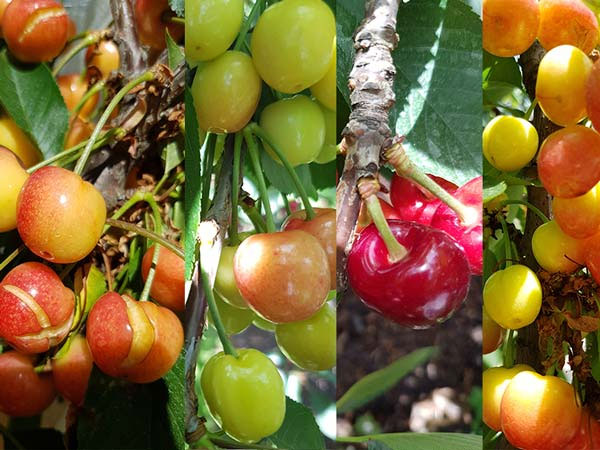The next three months are forecast to be wetter than average for many cherry growing regions according to the Bureau of Meteorology.
There are indications that some areas are already experiencing a fairly full soil moisture profile, slightly cooler temperatures and delayed bud movement.
Add this to the bee hive availability issue thanks to the Varroa mite incursion, and the lack of movement of bee hives between some States because of biosecurity threats—and the risk of a lower pollination rate in cherries may lead to an increase in quality for the fruit produced.
Over-cropping in some productive varieties may not be an issue this cherry season, and could lead to strong domestic and export sales.
Think about covers
Some States are offering grants to growers to cover some parts of their orchard with protective netting or rain covers. Check with your State cherry association or state government department to find out if you qualify.
Beware of water logging
Cherry trees do not survive in water logged soil for long. Make sure water can move from your orchard.
Use of a rotary drainer or even a shovel is sometimes all that is required to get excess water to move.
Protect your cherry crop from rain before harvest
Calcium sprays have long been considered of benefit for protecting and reducing damage from rain cracking.
There are other commercial sprays and oils that are registered for this use—remember that correct timing is essential, and read and follow the directions on the label.
Crackability index
A crackability index was produced by Christensen some decades ago. A recent scientific assessment of cherry cracking was published in Plant Methods. Part of the abstract is presented here:
Sweet cherry fruit cracking: follow-up testing methods and cultivar-metabolic screening
Michailidis et al. Plant Methods (2020) 16:51
Abstract
Background: Rain-induced fruit cracking is a major physiological problem in most sweet cherry cultivars. For an in vivo cracking assay, the ‘Christensen method’ (cracking evaluation following fruit immersion in water) is commonly used; however, this test does not adequately simulate environmental conditions. Herein, we have designed and evaluated a cracking protocol, named ‘Waterfall method’, in which fruits are continuously wetted under controlled conditions.
Results: The application of this method alone, or in combination with ‘Christensen method, was shown to be a reliable approach to characterize sweet cherry cracking behavior.
Seventeen cherry cultivars were tested for their cracking behavior using both protocols, and primary as well as secondary metabolites identifcation was performed in skin tissue.
Signifcant variations of some of the detected metabolites were discovered and important cracking index–metabolite correlations were identifed.
Conclusions: We have established an alternative/complementary method of cherry cracking characterization alongside the Christiansen assay.
Background (from the research paper)
Sweet cherry is an important temperate fruit crop and its production is characterized by short duration of fruit development during spring until the middle of summer in the Northern hemisphere. In sweet cherry, rain-induced cracking before harvest is the most significant crop loss in many cherry-producing areas with enormous commercial losses worldwide.
This physiological disorder is developed as cracks of the fruit skin after rainfall, sometimes deep into the flesh, affecting the stem end area, the calyx end and the cheeks of the fruit (side cracks).
Although sweet cherry cracking has been investigated for many years, few advances have been made in understanding the metabolic basis of fruit cracking susceptibility in the various cultivars.
The basic mechanism that causes skin cracking in sweet cherries focuses on the rapid increase of water absorption by the fruit either by direct absorption from the skin of the fruit or by the absorption of water through the tree vascular system.
In general, three types of cherry splitting have been described in the literature: stem end cracks, top end cracks and common lateral cracks. The type of split possible is determined by the occurrence of different ways of water uptake.
Research overview
In the article there is much about the methods of determining cherry cracking in the laboratory.
Perhaps more importantly is the literature cited which includes important work carried out by Dr Penny Measham in Tasmania.
See this article in Tree Fruit Sept 2022




















